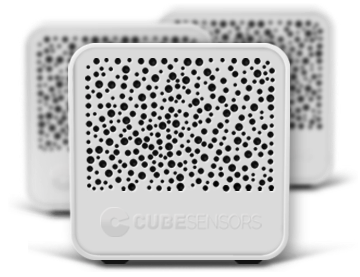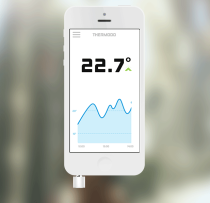 It wasn’t long ago that sensors and personal tracking seemed like pure nerdery. In the early stages of graduate school — before smartphones were popular or even widely available — I played around with sensors that had finicky battery life and Internet connectivity, the software was buggy, and the hardware looked clunky.
It wasn’t long ago that sensors and personal tracking seemed like pure nerdery. In the early stages of graduate school — before smartphones were popular or even widely available — I played around with sensors that had finicky battery life and Internet connectivity, the software was buggy, and the hardware looked clunky.
New tracking devices pop up regularly these days. They’re built and designed for a wider audience, and sometimes to my surprise, the devices are embraced by the target audience. It started with personal trackers that are fitness and health-related, but people are branching out now to monitoring their surroundings.
Two showed up on my radar this past week: CubeSensors and Thermodo.
CubeSensors (shown above) are available this summer and promise to “continuously measure temperature, humidity, noise, light, air quality and barometric pressure for every room.” They’re pretty, network-connected cubes that are almost as much decoration as they are tool.
 Thermodo is a project currently on Kickstarter (that is well above its goal and still has 21 days to go), and it’s a small thermometer that plugs into the headphone jack of your iPhone. It comes with an app, is slick, and pretty cheap at only 25 dollars.
Thermodo is a project currently on Kickstarter (that is well above its goal and still has 21 days to go), and it’s a small thermometer that plugs into the headphone jack of your iPhone. It comes with an app, is slick, and pretty cheap at only 25 dollars.
So the technology and audience are there, and the former will keep getting better, but I wonder about the latter. Is it just a fad, or will people grow more data hungry and want to track more things and buy fancier devices?
I think the key is finding usefulness in the long-term. In the short-term, it’s fun to measure the temperature to see if your furnace and thermostat work or to measure noise pollution and light levels in an office. But once the novelty of the devices has worn off, you just want to feel comfortable. You put on a sweater if you’re cold and take it off if you’re hot, and it doesn’t matter what the actual temperature is. If it’s too loud, you close the window or put on headphones, and it doesn’t matter how many decibels are measured.
The data comes easy now. Essentially, the challenge is making use of the new feed of data past current status.


My long-term sensor value bets are on health and time and dollars saved. Obviously, overlap exists among the three, but distinct value propositions also occur. For example, early-warning body sensors will save health-care dollars, but a brain spared a stroke is beyond financial calculation.
Many human activities/technologies still lack sensor monitoring. Electrical appliance monitoring in the home is not wide-spread. Household water conservation through soil monitors. Real-time insulin monitors. The potential list is long for value instead of trivia. Examine expensive or time-sensitive problems, and look for ways to leverage sensors.
Heck, I still don’t have a personal dashboard app of my activities across all computing devices; PC, tablet, phone, etc. I don’t want to intervene, just monitor and give me stats when I want them. And no, Google, you can’t leverage it for ad dollars.
They are even more ubiquitous already. Take a look at the Samsung Galaxy S4 (just released). It’s more of a mobile sensor array with a display than it is a phone : http://l.rud.is/YEzU1p
Besides the accelerometer & proximity sensor, it has a light sensor, compass, gyroscope and barometer along with temperature and humidity (it’s predecesor has some of those, but not that whole array). There are even whole new data gathering networks that take advantage of some of these sensors like pressureNet – http://pndv.cumulonimbus.ca/
I don’t think it’s a fad. I think it has a bright future. At least I hope it does :-)
In the same vein, there’s also the Air Quality Egg, which is neat: http://airqualityegg.com/ I saw it demoed at green event in NYC last year.
For the layperson, this is interesting data to have around to monitor your own surroundings. As a meteorologist, this has the potential to be very exciting. More observation data can lead to more accurate forecasts, but only if the underlying data is accurate. It will be interesting to see if/how weather authorities treat these devices in the future.
As a personal use fad I think these devices will fade. As the article suggests we have outstanding human senses fully integrated. However, these new devices would be priceless if we wanted fully integrated senses for our personal computers to make decisions. Without data to make those decisions they can only make bad guesses.